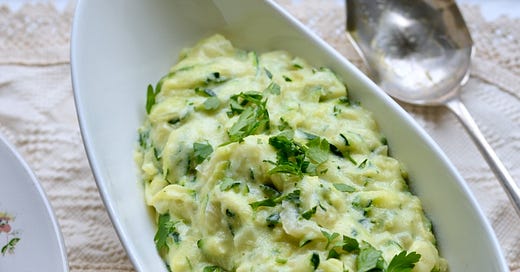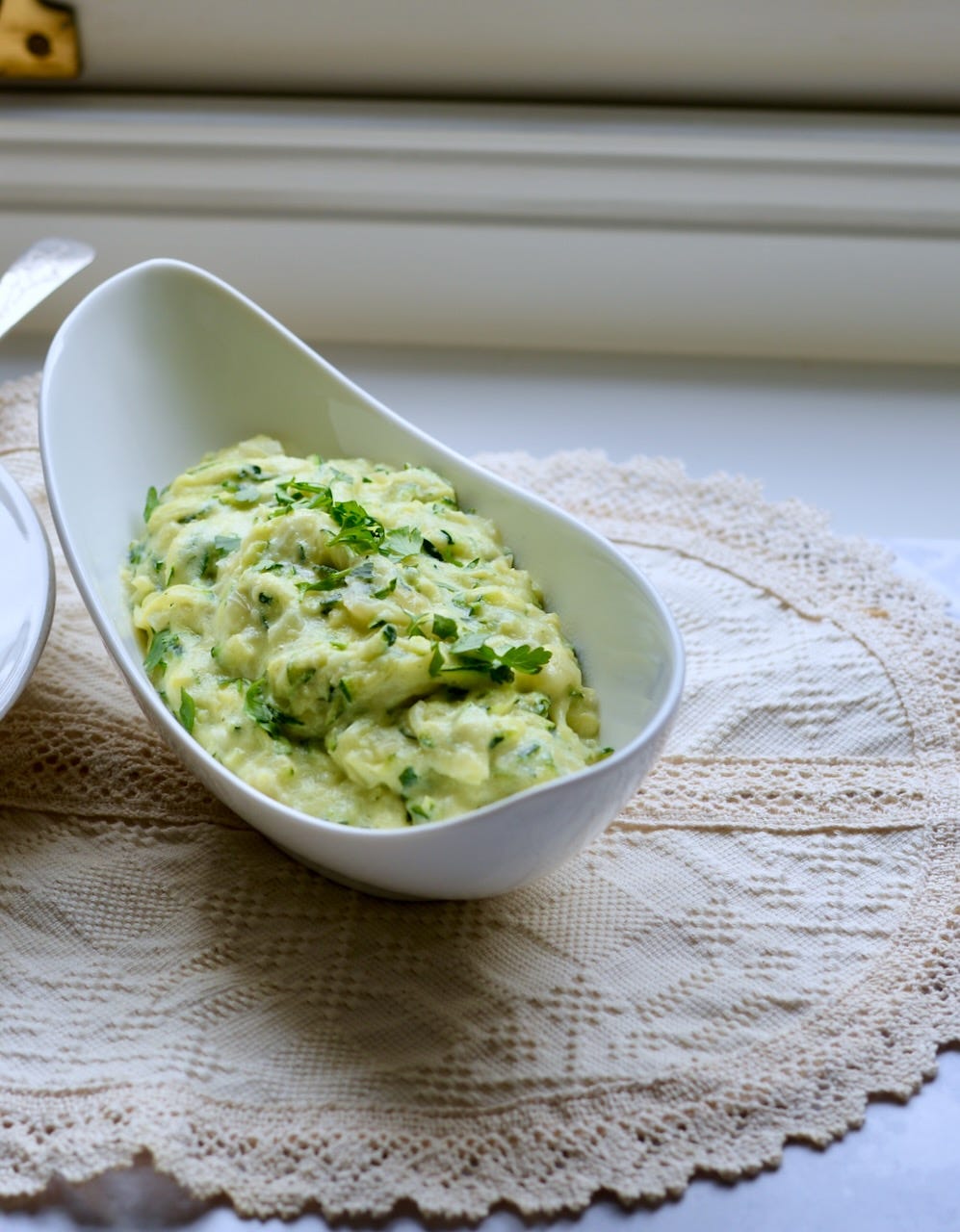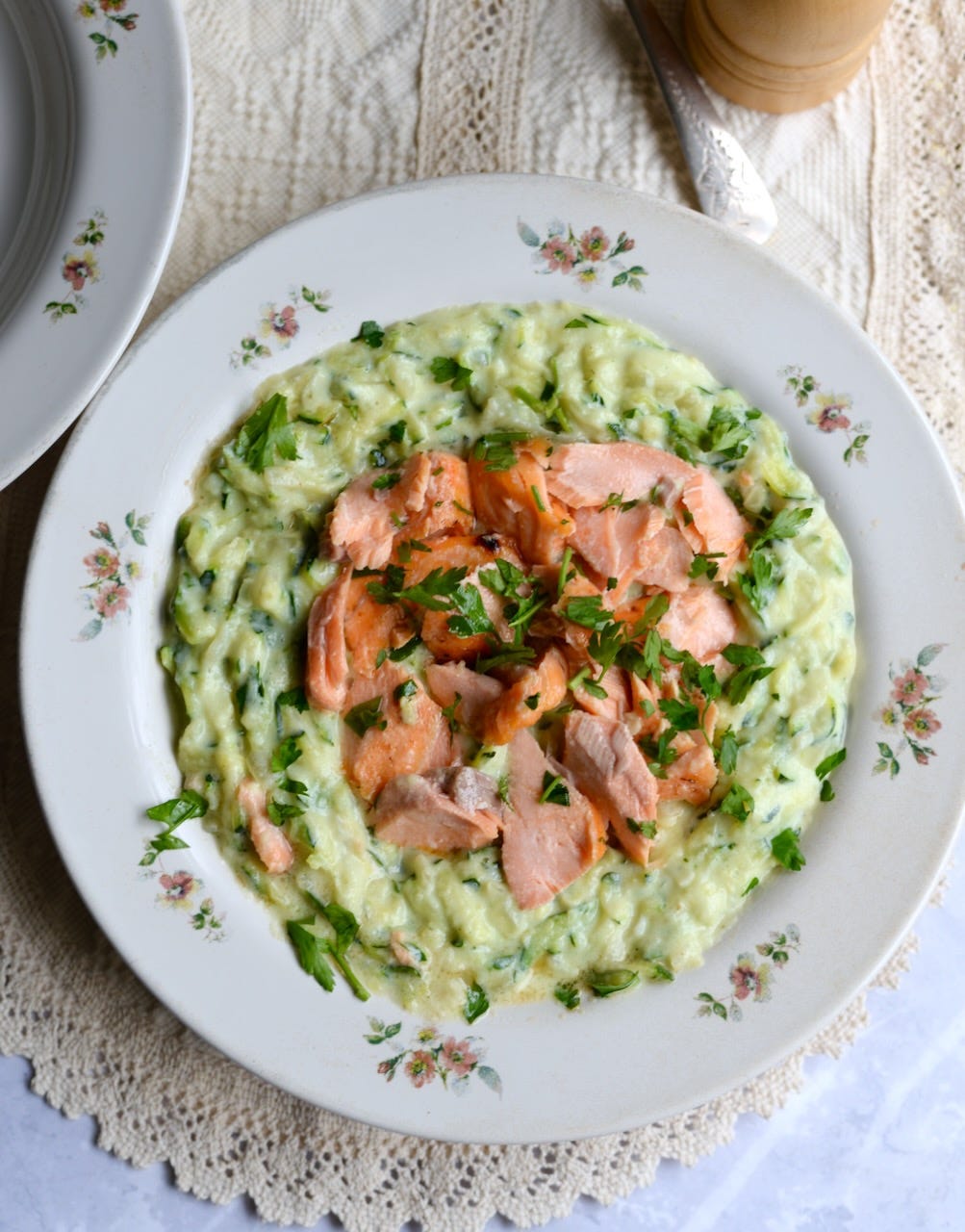Creamed courgettes or Banat Ciușpais
Banat Ciușpais recipe. More about the Swabians. Spy/Master series on the BBC iPlayer.
The Banat lies in southwest Transylvania and offers the charming beauty of the Carpathian alpine landscapes merging into hills rolling south, towards the Danube. It is home to a particular group of Transylvanian Germans, the Swabians, who were invited here in the 18th century to make the region more prosperous. These Swabians, called șvabi, are distinct from the German Saxon settlers who fortified Transylvania's southeastern border against nomadic tribes in the 13th century; hence the beautiful Saxon fortified churches you can visit today. The Swabians came later from Germany and Austria and settled in cities or rural areas based on their origins, speaking different German dialects, often leading to interesting situations where Swabians from the countryside wouldn’t understand the Swabians in the cities.
However, their shared heritage was most evident in their cuisine, which consisted of sophisticated and rich dishes that differed from the local cuisine at the time. Notably, their baking traditions, particularly the Swabian cakes, are to this day considered works of art (more in ‘Tava’ baking book about the Swabians, in case you’d like to delve deeper).
It was almost funny that when I asked German Saxons about a particular recipe or elaborate cake, they often said, 'We don't make this here, maybe in Banat, ask the Swabians.'
One of the dishes the Banat inherited from the Swabians is ciușpais, a courgette sauce with origins in Vienna: Zuspeise is a vegetable sauce that goes with meat. You will also find it in Hungarian communities, as Tökfőzelék, where it is translated as ‘pumpkin’ sauce, even though it’s made with marrow. ‘Főzelék’ is anything creamed. So yes, you can make it with marrow, too.
There are two versions: with butter, flour and stock, or with milk and semolina. I prefer the latter, hence the recipe below:
Ingredients (make 2 large or 4 small portions)
25g butter
1 large brown onion, diced
2 garlic cloves, grated
400-500g courgettes, grated
350ml full fat milk
30g semolina
15g dill, fennel or parsley, chopped
Method:
Sauté the onion in butter with a pinch of salt until soft and translucent but not browned. Stir in the garlic and add the courgettes, cooking on medium heat for 5 minutes and stirring occasionally. Pour in the milk and bring to a simmer, then add the semolina and combine well. The mixture will get thicker and creamier. Some people like the sauce to be thin, like a soup, so if you are one of them, add more milk. Taste and adjust for seasoning, then add the dill, reserving a little for decoration. Serve warm.
One texture that stands out: creaminess
Ciuspais is served as a sauce for meat, roasted or fried, and even sausages, and I also like it with smoked fish, salmon or trout.
It proves that a meat dish can be fantastic without needing an opposing flavour, such as 'something acidic to cut through the richness'. The layering of richness on richness is comforting, and the creaminess against the butteriness of the meat is soothing.
After the first mouthful, you will feel relaxed, sinking into your chair as you inhale the steamy scent of the greenish-yellow courgettes. You may find yourself swapping the fork for the spoon, eating the sauce like a soup, and checking the pan for any traces left around the sides. I always end up eating the sauce first—all of it.
I also like courgettes raw
I grate them and mix with a garlic vinaigrette. It’s a vibrant green, and when you look at it, you anticipate the crunch, and the freshness against the creaminess of the pulp.
Make the vinaigrette with one tablespoon of vinegar and three tablespoons of olive oil, and one large garlic clove, grated. This is a good starting point. Combine it with the grated courgettes and taste, then adjust the flavours. I, for one, like it quite garlicky.
A brilliant TV series
I’m currently watching a TV series called ‘Spy/Master’ on the BBC iPlayer, which was produced by HBO and is about Romanian General Pacepa. He was Ceaușescu's right-hand man and the highest-ranking defector to the US from the former Eastern Bloc. His defection in 1978 led to the collapse of the entire spy network of a Communist regime operating in the West, with links to the Soviet Union, Palestine and Libya. I recall my family listening to Radio Free Europe, where his letters were often read to denounce the regime. We used to hope that the Americans would see how oppressive the regime was and come to rescue us. Pacepa was a hero and a glimmer of hope that someone, somewhere, would help us.
The HBO series, which is available for free on the BBC iPlayer, is a dramatisation that offers insight into how the mind of a dictator worked.
In the first episode, you'll hear mentions of Swabians and German ethnic groups, as the main character was negotiating the sale of 200 families to Germany. Operation “Pilgrim" was not a one-time event but continued throughout the years, making the Communist regime a lot of money.
First Culinary Tour in Transylvania this September
Join us this September if you’d like to discover Transylvania through its most exciting dishes and explore the rich culture and traditions of the Saxon villages. The schedule for each day is here.









Lovely post, thanks Irina! Came across Swabians along the Danube in Hungary (there by invitation circa 1500?) and we filmed in a wine-cellar in one of the vineyards for an episode of The Rich Tradition (you can find it on talkingoffood.com). Major difference in cooking was the addition of red wine in a paprika stew - gulyasleves - cause of much merriment and references to difference between home-cooking with wives, and men-only cellar-cooking (unmarried ladies welcome).
Love this post -- and the ciușpais looks great!